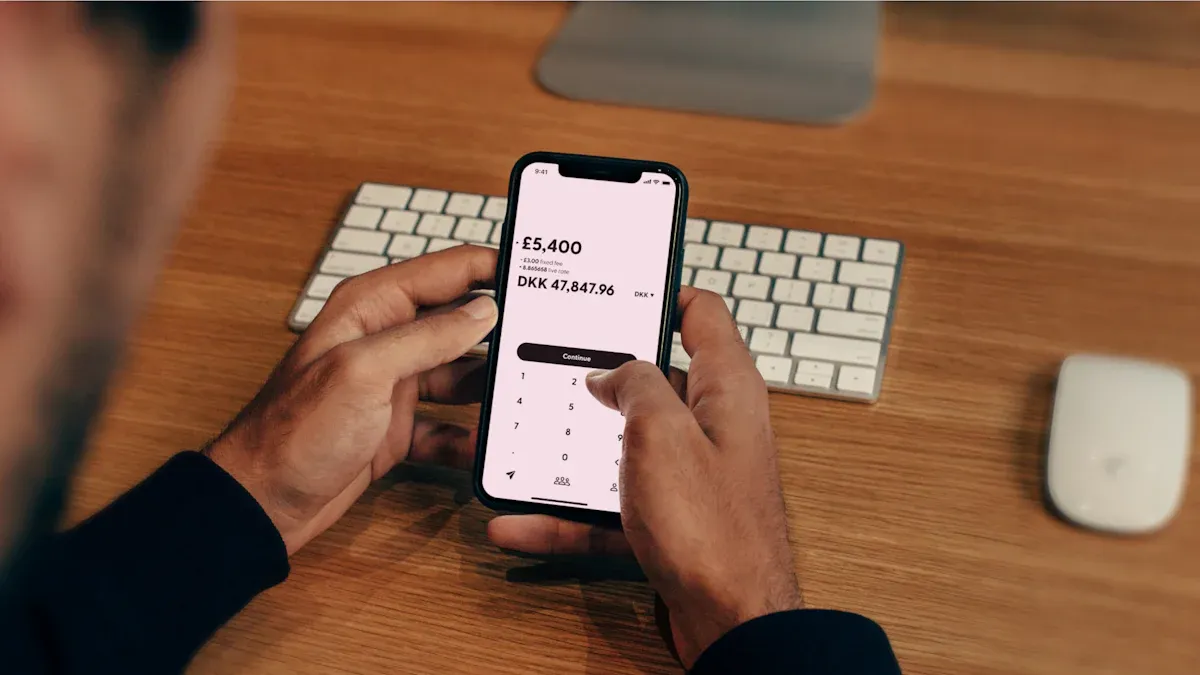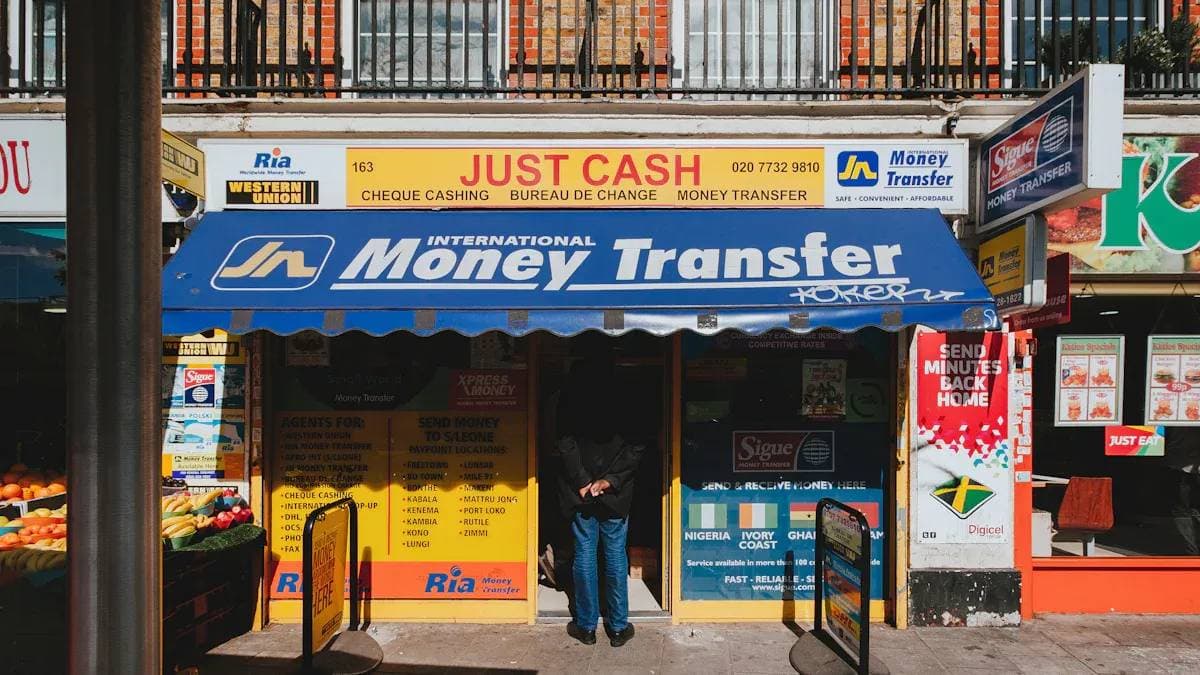- EasyCard
- Trade
- Help
- Announcement
- Academy
- SWIFT Code
- Iban Number
- Referral
- Customer Service
- Blog
- Creator
What is the Transfer Limit of Zelle? Detailed Analysis and User Guide

Image Source: unsplash
What is your Zelle transfer limit? The answer to this question is primarily determined by your bank. If you use Zelle through a partner bank’s app (the network currently covers over 2,200 financial institutions), the limit is set by the bank and is generally higher. If your bank is not a partner, the weekly limit for using the standalone Zelle app is $500.
💡 Did you know? In 2024, Zelle processed a total transaction volume exceeding 1 trillion USD with 3.6 billion transactions, demonstrating its important role in daily payments.
The good news is that there is usually no limit on receiving money through Zelle. The following sections will provide a detailed analysis of specific limits for major banks and guide you on how to check your own limits.
Key Points
- The Zelle transfer limit is determined by your bank; using a bank app generally has higher limits than the standalone Zelle app.
- To check your personal Zelle limit, log in directly to your bank app or online banking to view it.
- If the transfer amount exceeds the Zelle limit, you can choose a bank wire transfer or use other payment apps.
- Zelle transfers have no fees, but they should only be sent to people you know and trust.
- Once a Zelle transfer is completed, it usually cannot be canceled, so verify the recipient information before transferring.
Two Basic Scenarios for Zelle Limits

Image Source: unsplash
Your Zelle transfer limit mainly depends on how you use it. You can use Zelle through a partner bank’s mobile app or directly through the standalone Zelle app. The limit rules for these two methods are completely different.
Limits for Partner Bank Apps
This is the most common way to use it. If you use Zelle through the app or online banking of a partner bank such as Bank of America, Chase, or Wells Fargo, your transfer limit will be determined by your own bank.
Typically, these limits are much higher than those of the standalone Zelle app. Specific features include:
- Bank-Set: Each bank has its own set of limit standards.
- Account-Linked: Limits may relate to your account type (such as personal checking or savings account) and account age. New accounts may have lower limits.
- Tiered Limits: Banks usually set daily limits and monthly (typically 30-day) limits. For example, the daily limit might be $2,500 USD, while the monthly limit might be $20,000 USD.
We will detail the specific limit data for major banks in the next section.
Limits for the Standalone Zelle App
If your bank or credit union has not yet joined the Zelle network, you can still download and register the standalone Zelle app to send and receive payments. In this case, Zelle sets a uniform, lower limit for you.
For users not using Zelle through a partner bank, your weekly sending limit is $500 USD. This limit cannot be increased by user request. However, you can receive up to $5,000 USD in transfers per week.
This $500 USD weekly limit is usually sufficient for daily small payments, such as splitting dinner costs with friends or paying part of the rent. But if you need to transfer larger amounts, you will need to consider other methods.
Detailed Breakdown of Zelle Transfer Limits by Bank

Image Source: unsplash
Now, let’s look at the Zelle transfer limits set by several major U.S. banks. This data can provide you with a clear reference. However, please remember that banks may adjust these limits at any time. The most accurate information is always in your bank app or online banking.
⚠️ Important Reminder: All the following limit information is for reference only and primarily applies to personal accounts. Business accounts typically have higher limits. Be sure to log in to your personal bank account to view the accurate limits tailored for you.
Bank of America Limits
Bank of America sets very clear daily and monthly limits for personal accounts.
| Period | Maximum Amount (USD) |
|---|---|
| Daily (24 hours) | $3,500 |
| Monthly (30 days) | $20,000 |
In addition to amount restrictions, Bank of America also regulates the number of transfers. For personal checking or savings accounts, you can initiate up to 10 Zelle transfers per day and up to 30 per month.
Chase Limits
Chase takes a different approach; it does not set fixed Zelle transfer limits. Your limit is dynamic and may vary with each transfer.
Chase determines your single transfer limit based on multiple factors, including your account history and whether the recipient is a frequent contact. This means you cannot check a fixed number in advance. You will only know if you have exceeded the day’s available limit when you enter the transfer amount in the mobile app or online banking. For business accounts, the per-transaction limit is usually higher, up to $7,500 USD.
Wells Fargo Limits
Wells Fargo’s limits are similar to Bank of America’s, but it specifically distinguishes between new recipients and established recipients. For most personal accounts, when transferring to established recipients, the limits are as follows:
| Period | Maximum Amount (USD) |
|---|---|
| Daily (24-hour rolling) | $3,500 |
| Monthly (30-day rolling) | $20,000 |
What is an “established recipient”? If you are transferring to someone for the first time, Wells Fargo may give you a lower temporary limit. After completing several transactions with that recipient, they become an “established recipient,” and you can use the higher standard limits mentioned above.
Citi Limits
Citi’s limits are closely tied to your account type and account age. For standard personal accounts open for more than 30 days, the limits are as follows:
| Period | Maximum Amount (USD) |
|---|---|
| Daily | $2,500 |
| Monthly | $15,000 |
If your account has been registered with Zelle for less than 30 days, the daily limit may be as low as $500 USD. Additionally, if you have higher-tier accounts like Citi Priority or Citigold, your daily and monthly limits will be higher, up to $5,000 USD daily and $20,000 USD monthly.
U.S. Bank Limits
U.S. Bank, like PNC, does not publicly disclose its uniform Zelle limits. You need to check it yourself.
You can find your limits in the U.S. Bank mobile app by following these steps:
- Select “Help & services” from the main menu.
- Select “Learn your transaction limits”.
- View your specific limits in the “Zelle limits” section under “Send money”.
These limits are set by the bank for security reasons and cannot be changed by users.
PNC Bank Limits
Capital One Limits
Capital One’s limits are relatively straightforward. For its mainstream 360 Checking accounts, the limits are usually:
- Daily Limit: $3,000 USD
- Monthly Limit: Typically between $2,500 USD and $10,000 USD, depending on your account history and relationship with the bank.
East West Bank Limits
East West Bank, which serves many Chinese customers, also receives attention for its Zelle limits.
| Period | Maximum Amount (USD) |
|---|---|
| Daily | $2,500 |
| Monthly | $10,000 |
💡 Tip to Increase Limits: Unlike most banks, East West Bank allows some eligible users to apply for higher Zelle limits. If you have a good account history and need larger transfers, try contacting bank customer service to inquire about the possibility of increasing your limit.
Personal Limit Inquiry and Adjustment Guide
After understanding the general limits of various banks, you may want to know the exact limit for your account. This guide will teach you how to check and understand your personal limit and provide alternatives when exceeding the limit.
How to Check My Specific Limit
The most accurate way to check your personal Zelle limit is to log in directly to your bank account. Banks do not display your personal limit on public websites. You can follow these general steps:
- Log in to your bank mobile app or online banking.
- Navigate to the Transfers or Payments section.
- Select “Send Money with Zelle®”.
- On the transfer interface, the bank will usually display your daily and monthly available limits.
This number is tailored for you and is the most reliable.
Relationship Between Account Type and Limits
Your Zelle transfer limit is not fixed; it is closely related to your account situation.
- New vs. Existing Accounts: New accounts or users who have just registered with Zelle usually have lower temporary limits. The bank needs time to assess your usage behavior. For example, Citi has significant differences in limits for new and existing accounts.
| Bank | Account Type | Daily Limit | Monthly Limit |
|---|---|---|---|
| Citi | New Account (Less than 30 days) | $500 USD | $2,500 USD |
| Citi | Existing Account (More than 30 days) | $2,500 USD | $15,000 USD |
- Personal vs. Business Accounts: Business accounts typically have much higher limits than personal accounts to meet business needs. For example, Amalgamated Bank’s business accounts can send up to $2,000 USD per transaction with a daily cap of $4,000 USD.
Possibility of Applying to Increase Limits
For most banks, Zelle limits are automatically set by the system based on security models, and customer service representatives usually cannot adjust them manually for you. However, there are exceptions.
As mentioned earlier with East West Bank, and some banks like Gate City Bank allow eligible customers to apply for higher limits. If you have a good account history and genuine need, try contacting bank customer service to inquire about the possibility.
Large Transfer Solutions When Exceeding Limits
If your transfer amount exceeds the Zelle limit, consider the following two mainstream solutions:
- Bank Wire Transfer: This is the most traditional method for large transfers. It is safe and reliable but comes with fees and is not instant. For example, a domestic wire transfer through Chase online banking costs $25 USD and usually takes 1-2 business days to arrive.
- Other Payment Apps: Platforms like PayPal or Venmo also support large transfers. After identity verification, Venmo’s weekly transfer total can be up to $60,000 USD. However, note that using a credit card for payment or instant transfers may incur additional fees.
In summary, your Zelle transfer limit is mainly determined by your bank and account type. The best way to check your accurate personal limit is always to log in to your bank app and view it.
💡 Core Advice: Zelle is best suited for small, instant payment scenarios, like using cash; only transfer to people you know and trust. For large amounts exceeding the limit, a bank wire transfer is a safer and more reliable choice.
FAQ
Does Zelle charge fees for transfers?
Zelle itself does not charge any fees. Your bank usually does not charge for Zelle transfers either. You can think of it as a free value-added service, but it is best to confirm the specific policy with your bank.
Can I cancel a Zelle transfer?
You can only cancel a transfer if the recipient has not yet enrolled in Zelle. If the other party has enrolled, the funds arrive immediately, and the transaction cannot be canceled. Therefore, be sure to verify the recipient information before transferring.
Is there a limit on receiving money with Zelle?
If you receive money through a partner bank app, there is usually no limit. If you use the standalone Zelle app, you can receive up to $5,000 USD per week. Please refer to the information in your bank or Zelle app for specifics.
What if I send money to the wrong person?
Zelle transfers are like paying with cash and are difficult to reverse once completed. You should immediately contact the recipient to request a refund. If unresolved, contact your bank for help, but the bank cannot guarantee recovery of the funds.
*This article is provided for general information purposes and does not constitute legal, tax or other professional advice from BiyaPay or its subsidiaries and its affiliates, and it is not intended as a substitute for obtaining advice from a financial advisor or any other professional.
We make no representations, warranties or warranties, express or implied, as to the accuracy, completeness or timeliness of the contents of this publication.




Contact Us
Company and Team
BiyaPay Products
Customer Services
is a broker-dealer registered with the U.S. Securities and Exchange Commission (SEC) (No.: 802-127417), member of the Financial Industry Regulatory Authority (FINRA) (CRD: 325027), member of the Securities Investor Protection Corporation (SIPC), and regulated by FINRA and SEC.
registered with the US Financial Crimes Enforcement Network (FinCEN), as a Money Services Business (MSB), registration number: 31000218637349, and regulated by FinCEN.
registered as Financial Service Provider (FSP number: FSP1007221) in New Zealand, and is a member of the Financial Dispute Resolution Scheme, a New Zealand independent dispute resolution service provider.



















